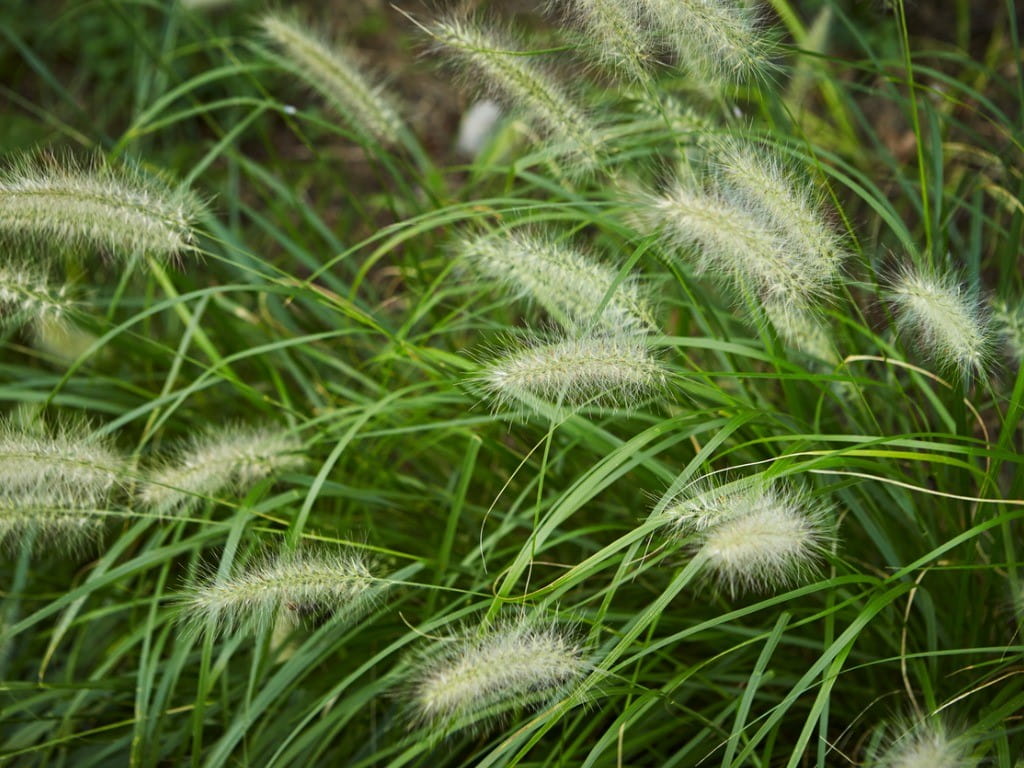The Hidden Danger of Foxtail Grass

The Bottom Line
The flowering stems of many wild grasses have a unique foxtail-like shape that allows them to be easily inhaled by humans or animals. The inhalation—also known as aspiration—of wild grass can cause coughing, respiratory irritation, and lung disease, such as pneumonia, which can be very difficult to diagnose and treat.

What is foxtail grass?
“Foxtail” is a term applied to a variety of wild grasses, most commonly from the genus Horedum. Grasses are found nearly everywhere—even in the Arctic. Although many types of grasses look alike, each has unique identifying characteristics. Types of wild grasses include:
- Foxtail
- Cattail
- Wheatgrass
- Rye grass
- Buffalo grass
- Timothy grass
- Wild oat
- Squirrel tail
- Sandbur
- Brome grass
- Foxtail barley
- Creep grass
- Hare barley
- False barley
- Yellow oatgrass
The flowering stems of many wild grasses have a characteristic shape known as an "inflorescence" or "head." The inflorescence contains a short, barb-like structure called the grass awn. Grass awns have a short, bristled section on one end, and a sharper stump on the other end. The unique structure of the grass awn is what allows it to easily move in only one direction when handled.
What makes foxtail grass dangerous?
When inhaled, grass awns can cause serious health problems. This is more commonly an issue with animals, including hunting and working dogs that exercise in fields with their mouths open. Humans can also inhale, or aspirate, grass awns into their lungs if they put wild grass in their mouths, play in areas where it grows, or otherwise handle wild grass.
Once grass awns have been aspirated, they can move throughout the lungs and cause coughing (including coughing up blood), lung irritation, pneumonia, and other long-lasting infections that can be difficult to treat. In some cases, grass awns have worked their way out of the body through the skin several months after their aspiration.
What to do if you inhale foxtail grass.
If coughing fails to expel the inhaled awn from the lungs, medical attention will likely be needed to remove it. The sooner it is removed, the less likely it is that the awn will cause serious problems.
If you have a question about poisoning from wild grass aspiration, get help online with webPOISONCONTROL or call 1-800-222-1222. Both options are free for the public, and available 24 hours a day.
Kelly Johnson-Arbor, MD
Medical Toxicologist
Revised William G. Troutman, PharmD
Professor of Pharmacy Emeritus
Poison Control Media Information
Did you find this page helpful? If so, we need your support. Poison Control is in constant competition with misinformation online. Links to www.poison.org or our webPOISONCONTROL triage tool from other websites and blogs help internet searchers quickly find accurate information and Poison Control’s contact information in an emergency. If you use the content from this page, please provide attribution via a link back to this page, www.poison.org, or https://triage.webpoisoncontrol.org/#!/exclusions. By doing so, you could save a life. Thank you!
Poisoned?
Call 1-800-222-1222 or
Prevention Tips
- Handle wild grass, including foxtail, cattail, and other varieties, with care. Do not put it in your mouth.
- Do not allow children to play unsupervised in areas where wild grass grows.
- Consider the possibility of foreign body aspiration—including the aspiration of grass awns—in children with unexplained lung illnesses.
This Really Happened
A 13-year-old boy complained of chest pain and difficulty breathing. A chest x-ray showed that he had pneumonia. The pneumonia did not improve after treatment with antibiotics, so he was sent to a lung specialist, who prescribed additional antibiotics and ordered a CT scan of his chest, which showed an irregular lesion in his lung. Ten days later, the boy developed a discharge from the skin on his back, and a surgical drain was installed. Four months later, he returned to the lung specialist and reported that a spike of grass was protruding from the area where the surgical drain had been. He then said that, prior to his chest pain, he thought he had swallowed a spike of grass while playing with it. Instead of swallowing the grass spike, he probably inhaled it. The grass spike traveled through his lungs until it came out through his skin. The grass spike was removed, and he had no further symptoms (from Kandur et al., 2015).
For More Information
References
Allred KW. Describing the grass inflorescence. J Range Manag. 1982;35(5):672-675.
Clery AP, Ellis FH Jr, Schmidt HW. Problems associated with aspiration of grass heads (inflorescences). J Am Med Assoc. 1959;171:1478-1484.
Hopper BJ, Lester NV, Irwin PJ, Eger CE, Richardson JL. Imaging diagnosis: pneumothorax and focal peritonitis in a dog due to migration of an inhaled grass awn. Vet Radiol Ultrasound. 2004;45(2):136-138.
Kanbur S, Evman S, Dogruyol T, Yalcinkaya I. A bronchopleurocutaneous fistula caused by unexpected foreign body aspiration: false barley (Hordeum murinum). Ann Thorac Surg. 2015;100(6):e125-e127.
Kazim Caglar M, Yeginsu A, Ozer I. Chest wall abscess due to aspiration of grass inflorescence. West Indian Med J. 2007;56(3):312-314.
Poisoned?
Call 1-800-222-1222 or
Prevention Tips
- Handle wild grass, including foxtail, cattail, and other varieties, with care. Do not put it in your mouth.
- Do not allow children to play unsupervised in areas where wild grass grows.
- Consider the possibility of foreign body aspiration—including the aspiration of grass awns—in children with unexplained lung illnesses.
This Really Happened
A 13-year-old boy complained of chest pain and difficulty breathing. A chest x-ray showed that he had pneumonia. The pneumonia did not improve after treatment with antibiotics, so he was sent to a lung specialist, who prescribed additional antibiotics and ordered a CT scan of his chest, which showed an irregular lesion in his lung. Ten days later, the boy developed a discharge from the skin on his back, and a surgical drain was installed. Four months later, he returned to the lung specialist and reported that a spike of grass was protruding from the area where the surgical drain had been. He then said that, prior to his chest pain, he thought he had swallowed a spike of grass while playing with it. Instead of swallowing the grass spike, he probably inhaled it. The grass spike traveled through his lungs until it came out through his skin. The grass spike was removed, and he had no further symptoms (from Kandur et al., 2015).
